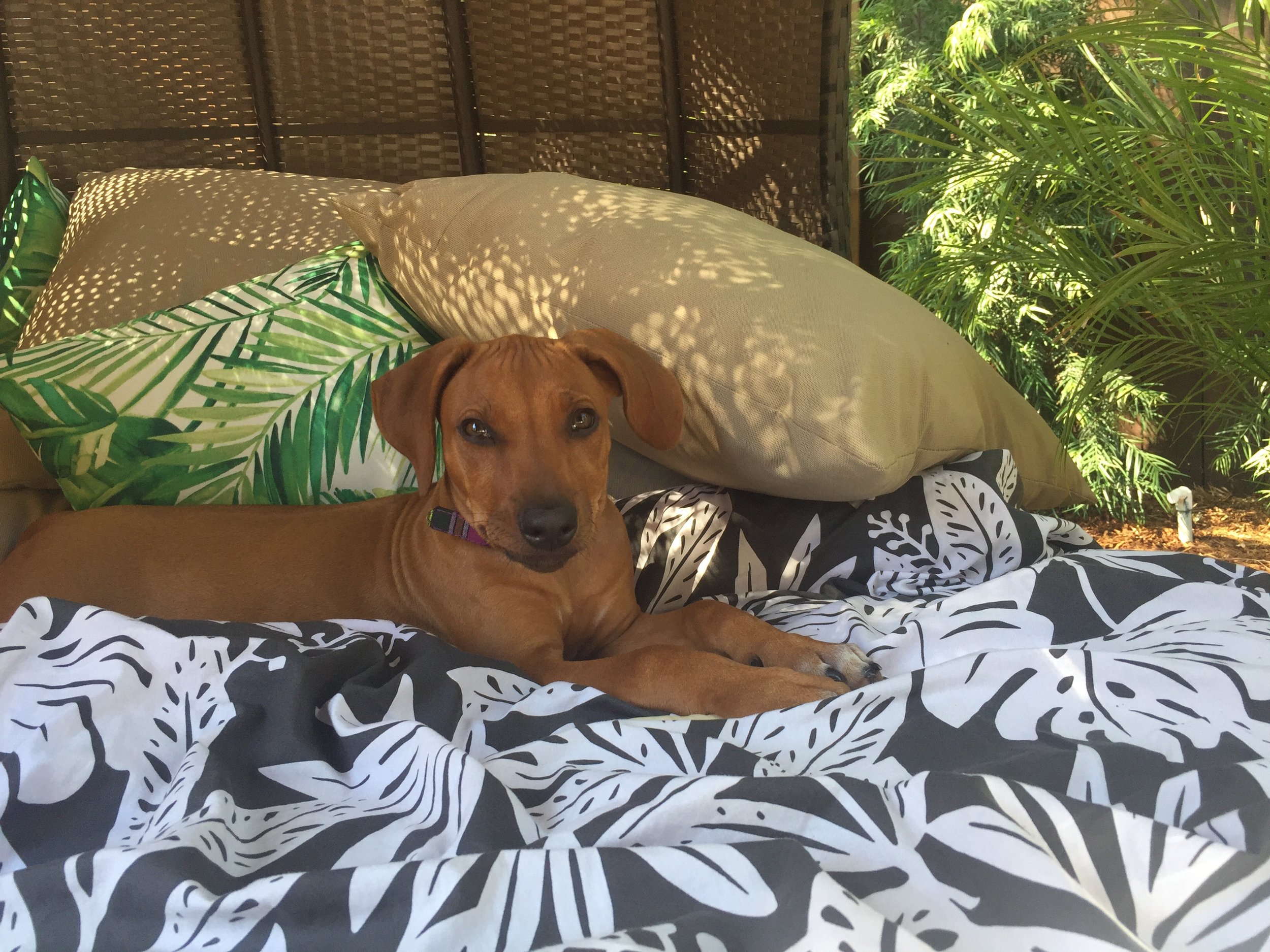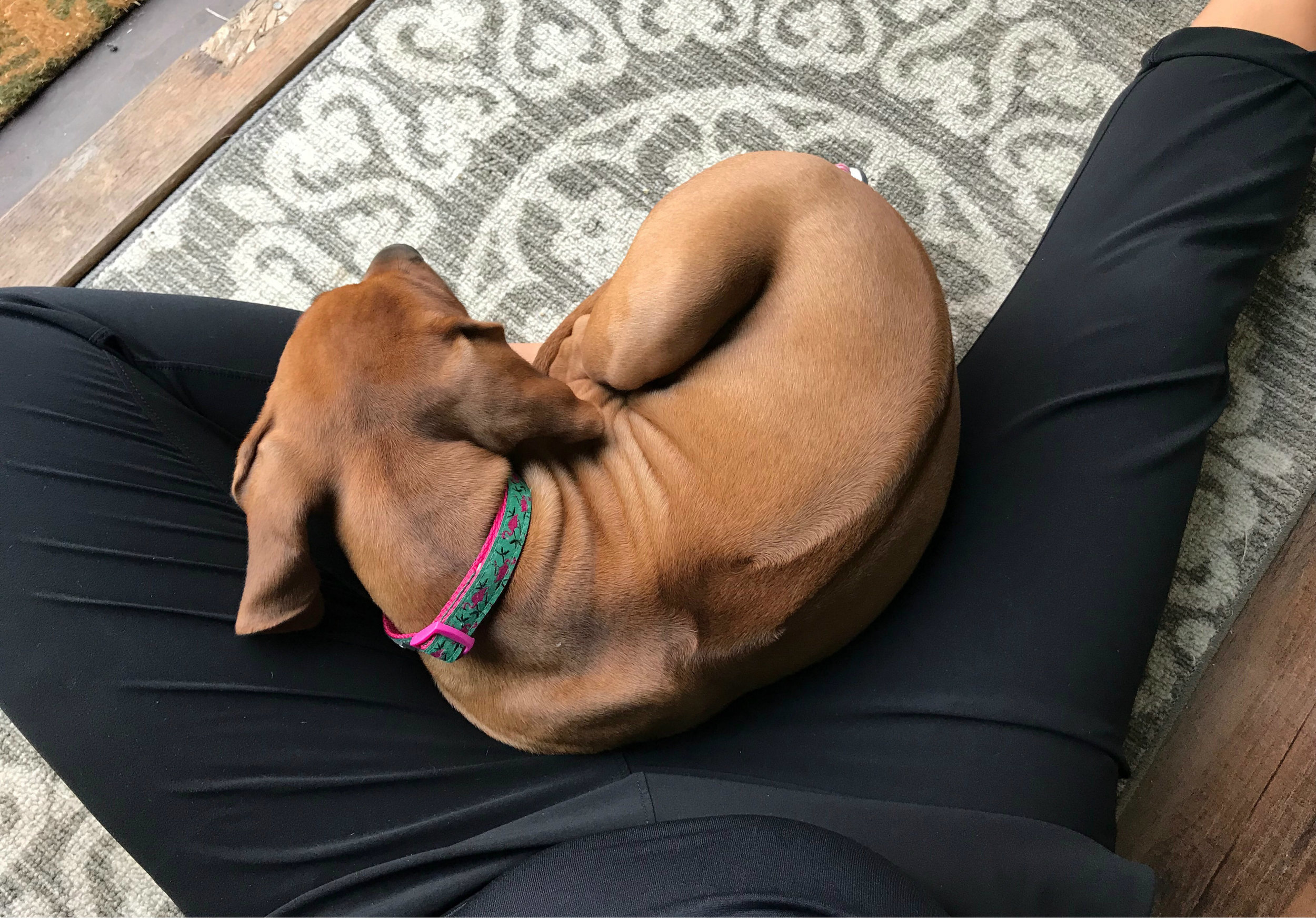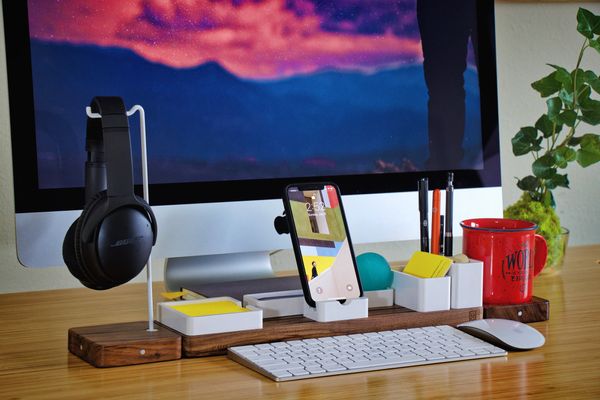
Over the last two weeks, I’ve shared how my husband Mike and I are adjusting to life with Lily, our 10-week-old Rhodesian Ridgeback puppy who has become my productivity muse. Each week, I’ll report my top discoveries and lessons learned as I experiment with new approaches to raising a young puppy while working at home.
While my strategies may not be appropriate for your lifestyle or your pup, my intent remains the same: to continue experimenting with different approaches until I uncover the best one for our situation, and share it so that others in a similar situation can benefit from my R&D.
Here are the top takeaways from Week 3.
1. Use Downtime Routines to Mitigate “Puppy Blues”
Emotionally, Week 3 was the hardest yet.
Our new responsibilities and routine have sunk in, and house chores revolve around Lily’s wake/sleep cycles. Lily herself is Jekyll and Hyde — going from a cuddly, intelligent little buddy to a deranged land shark hell-bent on nipping anything she can reach with her needle-sharp puppy teeth.
For an achiever, being too distracted to achieve can be demotivating and frustrating. During the workday, I went through spells where every 10 seconds or so, I was interrupted by something important: time-sensitive email, Lily chewing, Mike with an idea, Slack, texts, calls.
How am I going to cope with a full year of this, I wondered.
I began Googling to see if others had experienced this overwhelm, and it turns out there’s a full-blown phenomenon called the puppy blues or post-puppy blues. Many liken it to postpartum depression for its similar symptoms: overwhelm, anxiety and even grief due to the life changes a new puppy brings.
With this context, I worked through each of my symptoms, looking for opportunities to proactively mitigate them.
Here’s what worked this week.
- Fatigue: In bed an hour earlier than usual, with a Benadryl on the nights where I felt I needed the most rest.
- Work Distraction: Mike and I proactively communicated windows where he’d watch or monitor Lily someplace besides the backyard, so that I could focus on a conference call or work session.
- Challenging Workload: Wherever possible, I initiated teamwork. I jotted down a list of key results and to-dos, and scanned to see what I needed to do myself and which pieces of the work someone else could do more effectively.
2. Puppy Play Pen = Priceless
We’re lucky to have a big backyard (by L.A. standards, anyway), and the biggest challenge we’ve faced is helping Lily determine what she can and can’t do while we’re back there. We want her to feel safe to expend her energy, but we also don’t want her tearing up the plants and trees.
By far, the best solution has been to create a puppy play pen out of metal gates from Amazon. Lily loves hers so much that she goes in there voluntarily to play in her sandbox or with a specific toy. And she’ll nap out there or underneath my desk.
I wish we’d created this pen from the get-go. It gave Lily a place where she could independently play and hang out, and it saved us the hassle of always keeping an eye on her in the backyard (and, frequently, intervening to stop her from chewing when she shouldn’t).

3. Delegate the Unnecessary
One of the highlights of my relationship with Mike is that he’s a phenomenal cook, and prepares restaurant-worthy meals night after night, under seemingly any constraint. (I’m lucky and grateful.)
But with our attention fragmented between Lily, work, and keeping the house in order, this part of our routine has been the hardest to keep up. We’ve been eating a lot of takeout, which isn’t sustainable.
I finally asked Mike a freeing question: What if we got meal delivery again?
He was relieved.
I discovered a local company that offers premade ketogenic meals and started a subscription to get five meals per week delivered to the house. Our goal is to stock up on healthy snacks and beverages, and use this delivery service to cover our main meal during workweeks.
Biggest Lessons Learned
1. Create task-specific environments and leverage urgency. For years, I’ve recommended creating specific vistas and work environments optimized by activity. In my life with Lily so far, this has become even more important. The blocks of time when I’m not with Lily now have a different urgency and importance. Her naps have become like Pomodoros — windows for work sprints.
2. Capture your own best practices, and reference them when facing overwhelm. One of the core principles of my Destroy to Create philosophy is that your own best practices are, in a way, the status quo. Every three months, I try to rework a best practice, as if it has lost value. But the truth is that this is a mental model that enables me to come up with innovative ways to improve something that’s still working well. Old best practices can become fresh and new when injected into new environments and situations. So here, while I’m fighting fatigue, a challenging workload and a ton of new Lily responsibilities, some of my go-to productivity strategies are helping me deal.
3. Always ask yourself: Do I have to do this? Can someone else do it better, faster or easier? Of course, I love and prefer Mike’s home cooking. But we wouldn’t starve if he didn’t cook — we’d order takeout or figure out a plan. Delegating our weeknight meals to an external service satisfies my desire to stay on a nutritious, portion-controlled plan and his desire to cook (when he has time, like on weekends).
Stay tuned for Week 3, in which we tackle late-night crying and our early experiences with leash walking.









Member discussion